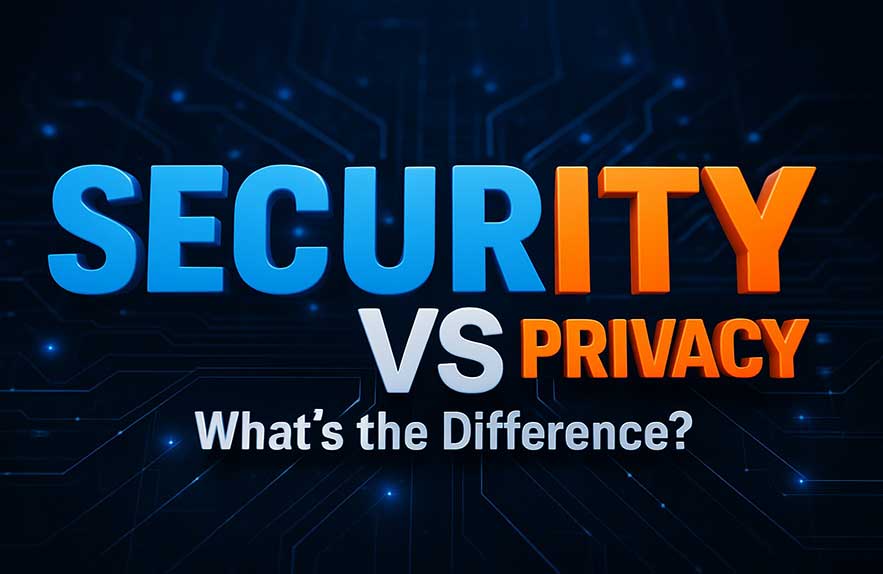
Why Online Scams Are More Dangerous Than Ever in 2025
It’s easy to assume online scams only happen to careless folks, or that cyber threats are just headlines meant for big companies. But the reality in 2025 is a lot more personal. Anyone with an email address, a smartphone, or a bank account is a target for some kind of online scam. It doesn’t matter if you’re running a business or just checking your messages at home—today’s scammers use clever tricks and advanced technology to zero in on everyone.
What makes the modern cyber threat so sneaky? For starters, scammers now use social media and personal data more than ever. With just a bit of online searching, they can find your job, friends, or recent purchases—making their messages look friendly, or even urgent. That’s a big shift from the old days of random “Nigerian prince” emails. Many online scams in 2025 use details from your digital footprint to bypass your guard. It’s easy to lower your defenses when a message includes your real name or mentions something you just posted on social media.
Even the tools have evolved. Scammers rely on artificial intelligence to pump out fake websites, realistic “customer support” chats, or deepfake videos. Some malicious links come disguised as part of group texts or urgent notices from your bank. The variety and sophistication of these new cyber threats make it tough to keep up, especially as techniques change by the week. Organized groups use automated bots to send out thousands of fake messages daily, hoping even just a few people slip up.
It’s not just credit card fraud or lost passwords anymore. Today’s online scams go after everything: personal photos, insurance payouts, tax returns, even loyalty rewards. Some scams try a gentle approach—posing as family or coworkers in need—while others use scare tactics, fake deadlines, or tempting investment offers. It’s no wonder so many folks, regardless of age or tech skills, find themselves caught out by a cyber threat when they least expect it.
The bottom line? Modern online scams can be far more dangerous, clever, and personally targeted than many people realize. That’s why learning what’s out there—and how crooks operate—is the first step in protecting yourself, your loved ones, and your savings. In the next section, you’ll see how phishing remains the most common scam, and how staying alert for these tactics is more important than ever in 2025.
Table of Contents
- Why Online Scams Are More Dangerous Than Ever in 2025
- Phishing: Still the Most Common Online Scam
- Identity Theft Through Everyday Apps
- The Rise of Investment & Crypto Scams
- Red Flags & Real Stories from 2025
- How to Protect Yourself Today
Phishing: Still the Most Common Online Scam
Ask almost anyone who has dealt with an online scam, and chances are good they ran into some form of phishing. Even as cyber threats have grown more advanced, phishing remains the number one way that criminals try to trick people out of their information, money, or access to important accounts. Phishing can show up in your email, your text messages, or even as a pop-up on websites you visit. What makes phishing especially tough is how real these scams can look—even folks who know better sometimes get caught by a convincing message.
At its core, phishing is about impersonation. You might get a message that claims to be from your bank, a favorite store, or even a coworker. These scams tell you something urgent, like “Your account is locked!” or “You need to verify your info to avoid issues.” Instead of helping, these links lead to fake sites built to steal your passwords or payment details. What’s really tricky in 2025 is that phishing attacks use AI to mimic real companies’ writing styles and logos. Sometimes scammers even copy entire conversations from genuine emails to make their messages look legit.
The tricks don’t stop at email. More and more phishing now happens through SMS (“smishing”), fake direct messages on social sites, or browser alerts that urge you to “update” or “call support.” In some cases, you might see deepfake videos or cloned voice messages claiming to be family members or colleagues. These scams leverage your trust and sense of urgency, hoping you’ll click before double-checking.
Phishing protection isn’t just about blocking spam. It’s about learning the red flags and slowing down before entering any sensitive data or clicking a link from an unexpected source. Look for misspelled addresses, odd greetings, or links that don’t match a known company’s real website. It helps to hover your mouse over a link (on computer) or press and hold it (on mobile) to see where it truly leads. If anything feels off, don’t rush—contact the company directly through their official website or customer support number. If you want extra tips, the FTC’s anti-phishing guide is always up to date.
Phishing protection starts with smart habits: don’t reuse passwords, use two-factor authentication wherever possible, and be a bit skeptical of urgent or emotional messages. Even with all the tech tools available now, your best defense is staying alert. Next, let’s look at how ordinary apps and everyday routines can sometimes open the door to identity theft—and what you can do to stay a step ahead.
Identity Theft Through Everyday Apps
Identity theft is no longer just about someone stealing your wallet or rummaging through your mailbox for an old credit card offer. In 2025, some of the most effective identity theft schemes start right on your phone, inside apps that millions of us use daily without a second thought. Simple conveniences—sharing photos, chatting, logging into games, even ordering food—can turn into unexpected online security risks if you don’t know what to watch for.
Here’s how it often happens: you get a message from someone who seems familiar—maybe a friend, a coworker, or a company you use. The message might ask you to click a link, enter a password reset code, or fill out a quick survey that asks for your birthday or address. Sometimes, scammers create fake login screens that look identical to the real thing, waiting for you to enter your details. In other cases, they use social media to gather information, following your public posts or digging into groups you’re a part of. With just a bit of your info, they can start piecing together the details needed for real identity theft.
Small data leaks can snowball into big problems. Maybe you typed your name and birthday into a fun quiz app, or trusted an app with photo access so you could add a filter. Each bit of data piles up in ways you might not expect. Criminals “scrape” public profiles and connect the dots, sometimes for months before launching an attack. It’s not just stolen passwords or bank numbers anymore; personal habits, relatives’ names, pet photos, and old addresses all become puzzle pieces for scammers who want to open new accounts or claim benefits in your name.
The biggest risk comes from reusing passwords between apps, or using insecure logins for important services. If a fun app or small site you use gets hacked, cybercriminals take those logins and try them everywhere else—your email, cloud storage, or even tax and medical portals. This “credential stuffing” attack is a major reason why one lucky guess can spiral into full-on identity theft, sometimes without you realizing until it’s too late.
Strong online security practices are more important than ever. Always use unique passwords, and enable two-factor authentication wherever you can—especially for accounts tied to money or sensitive data. Be cautious about which apps you connect to social media or allow access to contacts and photos. Check app permissions regularly; it’s easy to forget how much access you’ve given away over time. If you want clear advice or need to know what to do if you suspect identity theft, the official IdentityTheft.gov site is a reliable starting point for recovery and prevention tips.
Identity theft is scary because it hits where you least expect it—right inside the devices you use and trust every single day. By thinking twice about what you share, where you log in, and how you guard your details, you make yourself a much harder target for this kind of cyber threat. Next up, let’s talk about investment and crypto scams. These are getting bolder and more high-tech every year.
The Rise of Investment & Crypto Scams
If there’s one trend that’s exploded in recent years, it’s the rise of online scams related to investments and cryptocurrency. These scams have quickly become one of the most profitable forms of cyber threat for criminals, and many victims are ordinary people hoping to make, save, or grow their money online. If you’ve spent any time on social media or YouTube in 2025, you’ve probably seen ads, messages, or “influencers” promoting the latest hot investing app or a new digital coin. Unfortunately, many of these offers aren’t from real companies—they’re sophisticated traps designed to trick even careful, experienced internet users.
Investment scams today come in many shapes. Some scammers create fake exchanges that mimic legitimate crypto platforms, complete with working dashboards, live “customer support” chats, and the appearance of real-time returns. Victims often discover the scam only when they try to withdraw money and suddenly can’t access their funds. You might also see pump-and-dump schemes, where a group hypes up a low-value coin to drive up the price, then dumps it as soon as enough people buy in, leaving everyday investors with the losses. For a real look at how these scams play out, you can see examples and current scam alerts at the official FBI IC3 cybercrime site.
A common trick in 2025 is the “fake influencer” pitch. Criminals use stolen profile pictures, AI-generated videos, or even deepfake voices to create a sense of trust. They post testimonials, fake reviews, or short videos showing how much they “earned” with a specific platform. Sometimes, they’ll reach out directly via direct message or invite you into exclusive chat groups, promising insider tips or early access. The language is always urgent, with phrases like “limited time offer,” “guaranteed returns,” or “don’t miss out on this chance.” The more pressure you feel, the more likely it’s a cyber threat in disguise.
What sets these online scams apart is just how convincing they look. It’s rare for them to be riddled with spelling mistakes or obvious errors anymore. Instead, scammers use professional marketing materials, fake news articles, and even paid search ads to look legitimate. They might register websites with names nearly identical to real companies, or use cloned apps that pass a quick glance. Some even have phone support numbers and help articles, creating the illusion of a real business. But behind the scenes, the goal is always the same: take your money and disappear.
How do you spot the red flags of investment and crypto scams? Any “opportunity” that promises huge or guaranteed profits with little to no risk should make you pause. Pressure to act fast, provide personal details, or move money outside of a traditional bank system is a classic tactic. Real investment firms take time to explain risks, don’t offer sky-high returns with no proof, and won’t push you to invest right away. If you’re not sure about a company, checking with resources like the FTC’s guide to investment scams can help you avoid costly mistakes.
As cryptocurrencies, NFTs, and new investing apps become more mainstream, so do the online scams that surround them. Just as with other forms of cyber threat, your best defense is skepticism and careful research. A good rule for 2025: if something sounds too good to be true, it probably is. Up next, we’ll dive into real stories from people who got caught by trending scams, and what you can learn from their experiences.
Red Flags & Real Stories from 2025
It sometimes feels like every week there’s a new headline about someone being caught in the latest wave of online scams. But the details of how these cyber threats play out in real life are what really stick with you—and can help you spot trouble before it strikes. Learning from other people’s missteps makes for the best prevention. These stories, pulled from news coverage and real forums, show just how creative scammers have become and what warning signs you should always trust.
One of the most chilling scams in 2025 involves fake customer support. Molly, a small business owner, started getting urgent emails that looked like notices from her company’s billing platform. The messages warned her that her business account would be suspended unless she verified her information “immediately.” All the branding and links looked right. In a rush, she clicked through and gave up her username and password to a fake page. Cybercriminals used the access to change her payment details, and Molly didn’t notice until a vendor called about missing funds. The red flag? Real platforms never threaten urgent account shutdowns over email links—always go directly to the company’s real website.
Identity theft by impersonation keeps getting smarter. Take the case of Kevin, who got a text asking him to “confirm a code for your package delivery.” He’d just ordered online, so it sounded normal. He clicked the link, entered what looked like a tracking number, and the page redirected to a login for his social media account. By the time Kevin realized he’d logged in on a fake site, hackers had locked him out and used his account to hit up all his friends for money. If something feels off, especially if a scam asks for personal info in a rush, it’s okay to stop and verify. These phishing protection basics save hassle every single day.
Then there are the investment and cryptocurrency scams that hook people with a “hot tip” that just needs quick action. In one widely reported case, dozens of people joined a trending chat room run by an influencer offering a shortcut to easy crypto profits. By the time users realized the site was just a copy of a real exchange and the “returns” weren’t actually being paid, the scammer had vanished—leaving nothing but empty wallets and regrets. Any time a stranger pushes urgency, private deals, or promises you guaranteed money, it’s usually a well-disguised online scam. Advice from the UK’s Action Fraud service is regularly updated with patterns and victim stories.
These stories can feel scary, but they show the power of a critical mindset. Don’t trust links in DMs, rushed texts from “support agents,” promises to double your money, or anyone who presses you for login details right now. The real world is rarely that urgent. Listen to your gut, double-check web addresses, and remember that companies’ real support teams never ask you for sensitive info over chat or email. If you’re ever unsure, it’s smart to hit pause—step away, check the company’s official site, or talk to a friend who can take a fresh look.
By staying alert to these red flags and learning from what others have been through, you’ll quickly spot most scams before they get close. In the last section, we’ll look at the easiest steps you can take today to keep your money, identity, and online presence safe—no extra gear or subscriptions required.
How to Protect Yourself Today
Staying safe from online scams in 2025 doesn’t mean locking down your digital life completely. It just means making a handful of smart habits second nature. You don’t have to become a cybersecurity expert to avoid most scams or protect your online accounts. With the right approach, you’ll find it’s easy to spot red flags and keep scammers at arm’s length.
First, treat every request for your information—especially messages that seem rushed or emotional—with a healthy dose of skepticism. Don’t click on links unless you’re sure who sent them, and never give out sensitive data over email, text, or chat if you can help it. Phishing protection starts with slowing down, double-checking the sender, and finding a second source to confirm anything urgent or strange. If you’re not sure, use an official app, website, or phone number instead of trusting a message.
Two-factor authentication is one of the strongest shields you can put up. It’s free on most accounts, takes just a minute to set up, and can stop even determined hackers in their tracks. If a scammer does get your password, this extra check keeps them out. Combine it with a password manager so you never have to reuse the same login twice.
Stay on top of software updates on your phone, tablet, and computer. Updates often patch security holes before scammers can take advantage. It’s just another way to make sure your online security doesn’t lag behind evolving cyber threats. Remember, your devices protect you best when they’re up to date.
If you ever spot an online scam—or fall for one—don’t panic or try to handle it totally alone. Many countries and platforms have dedicated teams to help. In the US, the FTC’s Fraud Reporting site is the first stop for reporting phishing, imposter scams, or identity theft. Acting quickly can sometimes stop money transfers, lock out an attacker, or prevent the same scam from hitting your friends or colleagues.
And finally: It’s worthwhile to share advice and real stories with people you care about. Often, the best phishing protection is knowing these scams exist in the first place. Talk with your family, your team at work, or even just a friend who isn’t as tech-savvy. Helping each other is still one of our best defenses.
A little knowledge and a few proactive habits go a long way. Stay cautious, stay updated, and keep learning—cybersecurity and online security are moving targets, but you’ll have most of the answers you need. Scams may keep changing, but your awareness can stay one step ahead.

